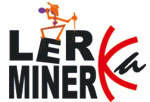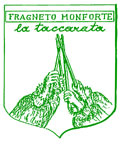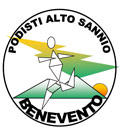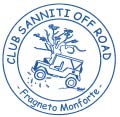 |
||||
|
|
||||
|
||||
STATEMENT OF MOTIVES Reflections by Nino Capobianco (translation by Tommaso Repola) The whole lot of motivations for the “Cammino di San Nicola” [Saint Nicholas’ Journey]is interwoven with different premises properly set into a decisional response issuing from each individual, who, with all his/her beliefs, ideology, living philosophy, is going to commit him/her-self for a walking voyage made of knowledge-eagerness, religious stimulus, response to philosophical spur, sporting attitude, ancestral draw from nature, a possibility to get acquainted and contaminated with the territory in a constructive countertrend. HISTORICAL AND RELIGIOUS MOTIVATION A strictly religious motivation is to be centered upon the thousand-year-old devoutness to the patron saint of Bari [capital city of region Apulia], patron saint in Fragneto Monforte [a village in the core of pre-roman Samnium] too. A historical newly started edition of the original pilgrimage to Bari since 1833, as described in a diary written on the occasion by Francesco Sorda [a pharmacist born in 1806] and titled “From Fragneto Monforte to Bari and Monte Sant’Angelo”. That’s what we can read at page 149: “Devoutness through pilgrimage towards San Nicola and San Michele Arcangelo del Monte Gargano were put into practice in ancient times by some few people in this village of Fragneto Monforte: thereafter and until present times that practice was stopped, so that a mere memorial tradition has yet been surviving. In 1829 two fellow townsmen only were able to rivive the tradition, Domenico Iadarola and Gabriele Capobianco, who both restarted the old route afresh, joining on the way a caravan coming from Terra di Lavoro [a plain west of the Appennines]. Happy back home, the two gentlemen narrated of wonderful towns, pleasantness of places, magnificence of holy buildings, and of great devoutness being delivered with prayers and rituals on the march, bringing about such an emotion in many souls, as to cause the same travel undertaken the very next year. In 1830 a congregation of 23 took shape under the leadership of Don Mario Iadarola. In 1831 Don Giuseppe Verdura took care of another group of pilgrims, and in 1832 no less than 38 took part in the pilgrimage.” Continuing with F. Sorda’s diary: “In 1833,on the morning of May the 3rd, since the air appears calm and serene by observation _ there’s been heavy downpour in the previous days _ a chiming has been set off at half past seven to summon a holy meeting in the church, where, after receiving a holy blessing with the patron saint’s statue full face, at half past nine the religious caravan made of 28 people took to the road (four more persons join at Pescolamazza)…Participants are aged betweeen 30 and 60, with the exception of three 15/16 year-old youngsters and of little Concetta Capobianco aged 6 and accompanied by her father. The voyage all the way down to Bary is brought to conclusion in five legs (that will add up to twelve with the complete way-back through Monte Sant’Angelo)… The journey had supposedly been performed by foot and partially by carts, on horses, mules and donkeys, taking into account food transport as well. A comment by Sorda after returning in Fragneto: “The pious congregation have happily completed their pious pilgrimage in our church, where, having received prosperous news about common inhabitants’ wealth, in the mid of a big rushing crowd, have been granted the holy blessing…” Here’s an excerpt from Don Mario Iadanza’s report about Sorda’s diary, issuing from an Istituto Galanti convention held in September 1988: << It is woth while noticing the unanimity in the action; it might be maintained that although voyaging pilgrims were but a few, moral and spiritual involvment affects the whole population, i. e. those people who said goodbye to leaving ones, who kept waiting in anxiety, who welcomed heartily, who are eager to get to know every detail of pilgrimage…” PSYCHOLOGICAL MOTIVATION Bringing oneself into question is surely a motivation: mission organizing with its related psycho-physical strain, interconnecting this effort with differential relaxing formulae to induce resolutness, selfcontrol as well as selfdiscipline and also problem-solving ability, finally enhanced selfesteem. Your breath guiding your steps: breathing in while lifting your foot to start your step, breathing out to follow up at the ground the same walking movement. A “stepping “meditation is the consequence, in that one can feel the track deep inside… turning oneself into the step, turning oneself into the track. It’s like sharply perceiving the ground through the contact of your feet becoming part of the earth, so as the earth becomes part of the person treading it, part of his/her whole being… to be perfectly conscious of “the” everything, to be one unit with the nature all around. The psychological moment brings motivation back to acquainting oneself with new peoples and new lands, innovative experiences, along an excalation made of interactions that are a primary need of human acting. ENVIRONMENTAL MOTIVATION This motivation is well outlined in the ground philosophy of Lerka Minerka association. It’s shared by all members: the search for new experiences, new paths and new stories to narrate; a free spirit, the enthusiasm for living together in the nature while enjoing one’s toil away. Far from hectic routines, mankind’s revaluation and human capabilities of nature perceiving and relationship find a smoother way, whereas modern life habits weaken human attention. This is how to try and develop a better environmental sensitivity, rediscovering genuine values. SOCIAL MOTIVATION
Those who don’t wish to go by foot can give a different quality to their motivation, namely taking part in the logistics aspect concerning the means of transport necessary to the expedition, so saving a social motivation that spurs on solidarity through services and emotions in a close contact with nature, along a short “alternative” summer holiday, in the wider dynamic context of an unprecedented adventure full of relax for dauntless people. SPORTING MOTIVATION The sporting agonistic spur that urges walkers, runners, and all those who have been training almost daily in the pursuit of a long-shot energy-challenging objective, be it for a sport discipline in particular, be it for the sake of physical fitness, is only too self-assertive to need any further considerations. Those who express such motivation will meet in “Il Cammino di San Nicola” a one-in-a-million kind of experience. |
|
|
|
|
 |




